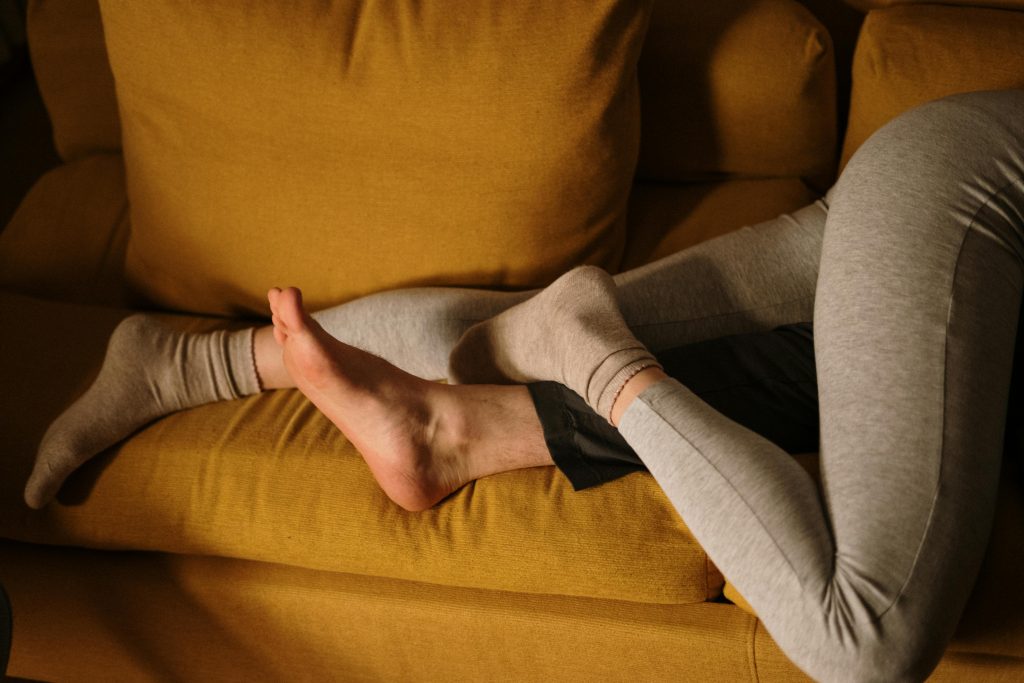Compression socks are a popular solution for improving circulation, reducing swelling, and relieving leg pain. Whether you’ve been prescribed compression socks by a healthcare professional or you’re considering using them for your health and fitness goals, one important question arises: how long should you wear compression socks?
This article will answer that question and more, exploring the benefits of compression socks, factors that influence how long you should wear them, and guidelines for different situations like exercise, recovery, and managing health conditions.
What Are Compression Socks?

Compression socks are specially designed to apply pressure to the legs and feet, promoting healthy circulation. These socks work by gently squeezing the veins and muscles, helping to prevent blood from pooling in the lower legs and encouraging blood flow back to the heart. Compression socks come in various compression levels, which are measured in millimeters of mercury (mmHg). The higher the compression level, the more pressure is applied.
The Benefits of Wearing Compression Socks
Before diving into how long to wear compression socks, it’s important to understand the benefits they provide. These include:
- Improved Circulation: By applying pressure to the legs, compression socks enhance blood flow and help prevent blood clots.
- Reduced Swelling: Compression socks help prevent fluid buildup, reducing swelling in the feet, ankles, and legs.
- Pain Relief: For individuals suffering from conditions like varicose veins or leg cramps, compression socks can alleviate discomfort and provide support to the muscles and veins.
- Faster Recovery: Athletes often use compression socks to speed up recovery after intense physical activity by improving blood flow and reducing muscle soreness.
How Long to Wear Compression Socks?
The length of time you should wear compression socks depends on your specific needs and health conditions. Let’s break it down based on different situations.
1. For General Use (Prevention and Comfort)
If you’re using compression socks for general circulation and comfort, such as for long flights or standing for extended periods, you can wear them for several hours. In most cases, 6 to 8 hours of wear per day is sufficient to see the benefits. Many people wear them during the day, either while at work or running errands, and then remove them when they’re at home relaxing.
However, it’s important to listen to your body. If your legs start to feel uncomfortable, or if you experience any pain or tingling, it may be time to remove the socks.
2. For Post-Surgery Recovery
Compression socks are often prescribed after surgery, especially for procedures related to the legs, veins, or circulatory system. If you’ve had surgery, your doctor will provide specific instructions on how long to wear compression socks. Typically, they’re worn continuously for 24 to 48 hours following surgery, and then worn during the day for several weeks as you recover.
Always follow your doctor’s guidelines for post-surgery care. Wearing compression socks too long can lead to discomfort or skin irritation.
3. For Edema and Swelling
If you’re using compression socks to manage swelling caused by conditions like edema or varicose veins, you can wear them throughout the day. Wearing them for 8 to 12 hours a day is often recommended to prevent swelling and to improve circulation. In some cases, you may be advised to wear them even while sleeping, particularly if you’re prone to fluid buildup at night.
Can You Sleep in Compression Socks?

For Circulation and Swelling:
- Wearing compression socks while sleeping can help with circulation, especially for individuals with swelling or circulation issues.
- The gentle pressure helps reduce fluid buildup and improves blood flow while you rest.
- Beneficial for conditions like edema or varicose veins, as it prevents blood from pooling in your lower legs.
For Muscle Recovery:
- Athletes or those recovering from physical activity may benefit from wearing compression socks overnight.
- Compression helps reduce muscle soreness and fatigue by improving circulation.
- It promotes faster healing by flushing out waste products like lactic acid from muscles.
For Comfort or Prevention:
- If you’re not dealing with circulation issues or muscle recovery, it’s generally not necessary to wear compression socks while sleeping.
- Wearing them overnight is usually only recommended if advised by a healthcare professional.
Consult a Professional:
- Always consult a doctor or healthcare professional before deciding to wear compression socks overnight for specific health concerns.
- If you’re wondering, can you sleep in compression socks, it’s best to ask your healthcare provider, especially if you have any medical conditions or concerns.
What To Keep in Mind
When sleeping in compression socks, choose a lighter compression level (15-20 mmHg) to ensure comfort. Higher compression levels can feel too tight when you’re lying down, potentially leading to discomfort.
4. For Athletes and Post-Workout Recovery
Athletes commonly use compression socks to speed up recovery after intense physical activity. These socks can help reduce muscle soreness, increase blood flow to the muscles, and remove metabolic waste products like lactic acid.
- Duration: Athletes often wear compression socks for 6 to 8 hours after a workout, or even while sleeping, to maximize the benefits.
- Frequency: The frequency with which you wear compression socks depends on your training schedule and recovery needs. Some athletes wear them daily, while others use them only after intense workouts.
Factors That Affect How Long You Should Wear Compression Socks
Several factors will influence how long you should wear compression socks. Let’s look at some of these:
1. Compression Level
Compression socks come in various strengths, typically ranging from 15-20 mmHg to 30-40 mmHg. The stronger the compression, the more pressure is applied. For lighter compression (15-20 mmHg), you can comfortably wear them for longer periods, such as 8-12 hours during the day. For higher compression levels (30-40 mmHg), wearing them for long periods, especially overnight, might cause discomfort unless prescribed by a doctor.
2. Health Conditions
If you’re using compression socks for a specific health condition, such as varicose veins, deep vein thrombosis (DVT), or edema, your doctor will likely give you a personalized recommendation on how long to wear them. For some conditions, compression socks should be worn throughout the day and possibly during the night, while for others, limited daytime use may be enough.
3. Comfort
Ultimately, comfort is key when wearing compression socks. If you find that wearing them for extended periods causes discomfort, it’s important to adjust your usage. Compression socks should feel snug but not painful. You should never feel numbness, tingling, or excessive pressure.
4. Activity Level
Your level of physical activity will also affect how long you should wear compression socks. If you’re very active, wearing compression socks after exercise or during prolonged periods of standing or sitting may be necessary. However, if you’re less active, wearing them just for a few hours a day may be enough.
Tips for Wearing Compression Socks
- Wear Them Gradually: If you’re new to compression socks, start by wearing them for short periods and gradually increase the time as your body gets used to them.
- Don’t Wear Them Too Tight: Compression socks should fit snugly but should never cause discomfort or restrict blood flow. If they’re too tight, it can cause more harm than good.
- Check for Skin Irritation: If you notice redness, irritation, or chafing, remove the socks and consult a healthcare provider for advice on how to prevent skin issues.
- Pair with Elevation: For maximum benefits, elevate your legs while wearing compression socks, especially if you’re dealing with swelling.
Conclusion
Compression socks offer several health benefits, including improved circulation, reduced swelling, and muscle recovery. The amount of time you should wear them depends on your specific needs and activity levels. For most people, wearing them for 6 to 8 hours during the day is sufficient, but some conditions may require extended wear or even wearing them overnight.
It’s important to listen to your body and consult with a healthcare professional if you’re unsure about how long to wear compression socks, especially if you have underlying health conditions.
Remember, the key to getting the most out of your compression socks is choosing the right compression level, following your doctor’s recommendations, and ensuring comfort throughout the day (and night, if needed).

